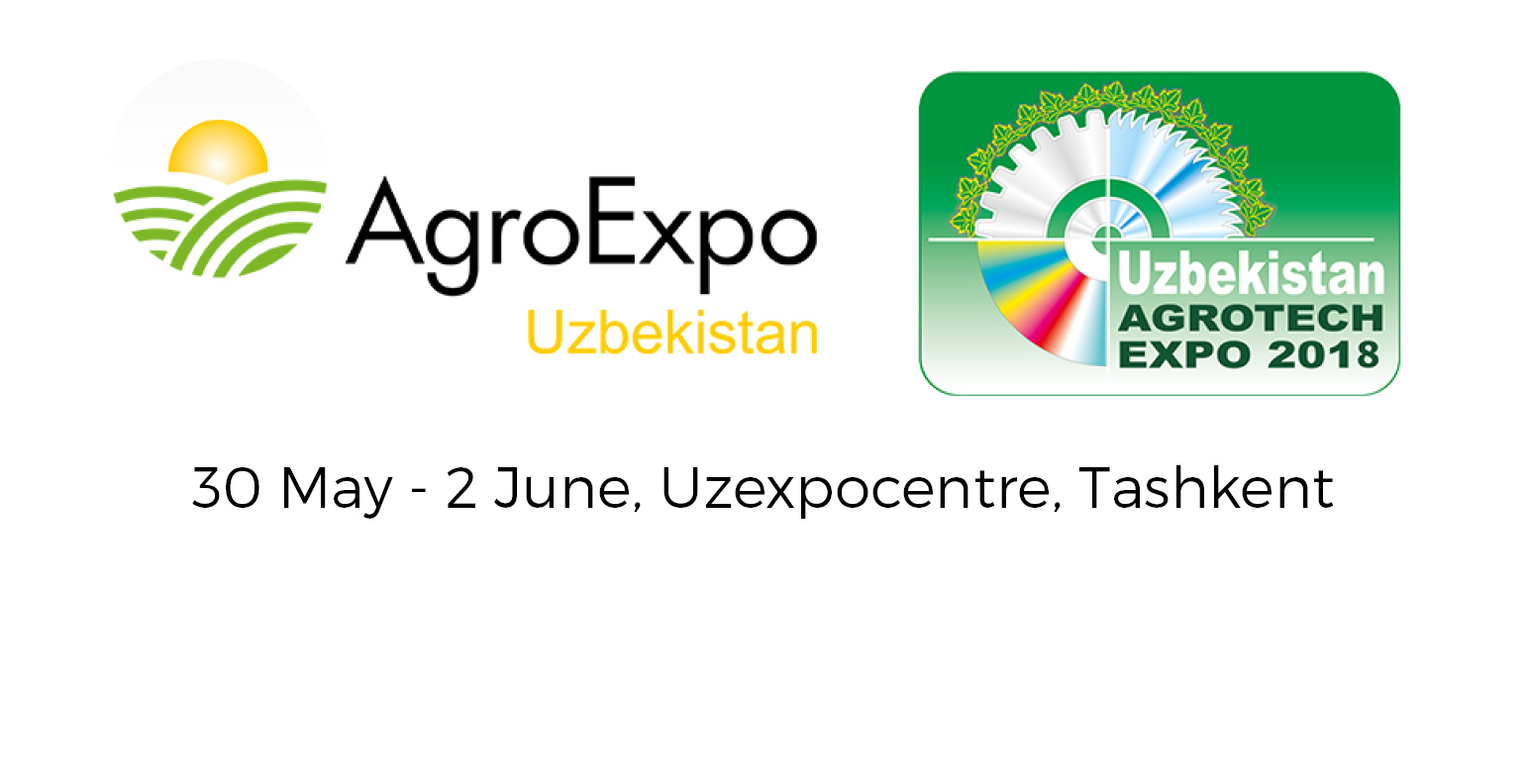
AgroExpo Uzbekistan 30 May – 2 June Stand C4, Pavilion 2
OMEX Agrifluids is delighted to be exhibiting at this years AgroExpo in Tashkent, Uzbekistan.
Are you a distributor? Do you want to work with OMEX?? If so then please visit our stand!
This year the Uzexpocentre will host the 13th edition of AgroExpo Uzbekistan /Agrotech Expo, one of Uzbekistan’s leading exhibition for agriculture and food processing industries.
The exhibitions have a long-standing reputation as a platform for establishing cooperation between foreign producers and buyers from Uzbekistan. In 2017 the exhibition was visited by 7.200 visitors from all 12 regions of Uzbekistan and neighbouring countries.
Currently, agriculture is one of the fastest growing sectors of economy. Due to the climatic conditions, as much as 85% of Uzbekistan’s agricultural land is irrigated. The most important crops are cotton and wheat, and significant other products include fruits (apples, apricots, peaches and berries), vegetables (cucumbers, tomatoes and potatoes), milk, silk and livestock. The production of raw cotton, a traditionally principal agricultural product, has been substantially reduced, which freed up around 170,500 hectares of land. This land will primarily be used to sow potato and other vegetables, forage crops for feed production as well as horticulture crops.
Currently Uzbekistan produces around 16 million tons of fruits and vegetables, the volume of which is expected to increase to 5 million tons by 2030.
OMEX offer a unique range of NPK foliar fertilizers which are designed to improve fruit firmness, storability, colour and skin finish. They can also be used to protect against conditions such as; bitter pit, internal browning, tip burn, black heart, blossom end rot, etc.
Why use foliar fertilizers??
- To minimise environmental impact. The usage efficiency of foliar applied nutrients is higher than soil applied nutrients. This can be important in environmentally sensitive areas and areas prone to leaching.
- To prevent or cure transient nutrient deficiency when nutrient demand exceeds root uptake rate. This may be due to poor root development or rapid crop growth.
- To by-pass soil conditions which limit nutrient availability and to thereby accelerate plant response. These conditions include adverse soil pH, moisture, texture and aeration.
- To target nutrients directly rather than rely on indirect transportation through the soil and roots. Examples of this are in preventing nutrient deficiencies of specific organs, e.g. fruit.
- To supply nutrients to plants with deep root systems, when soil surface application of fertilisers such as P, K, Ca, Mg and trace elements is not effective.
